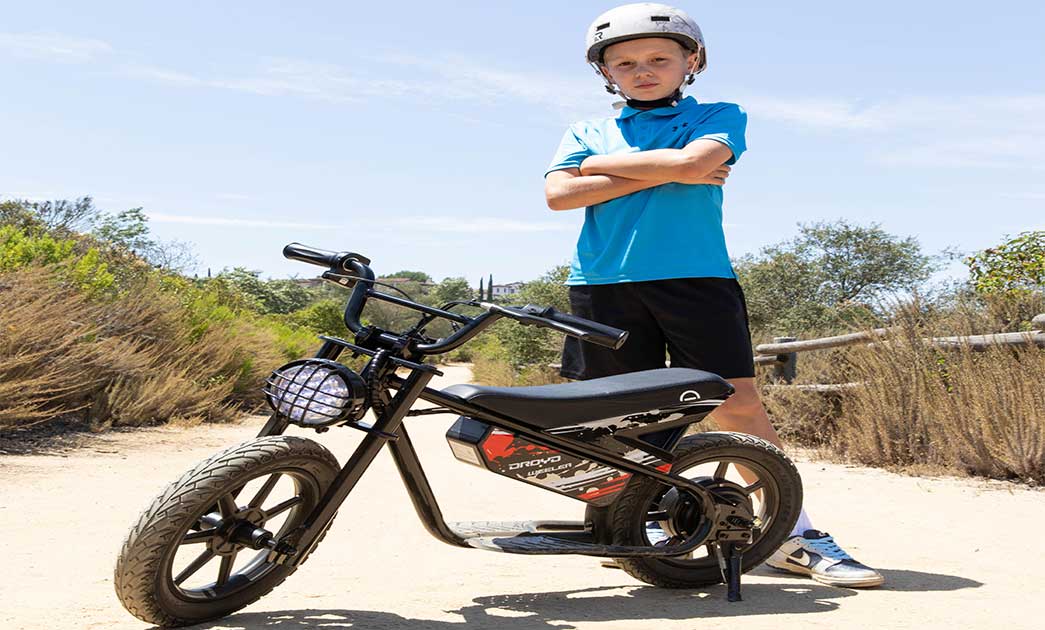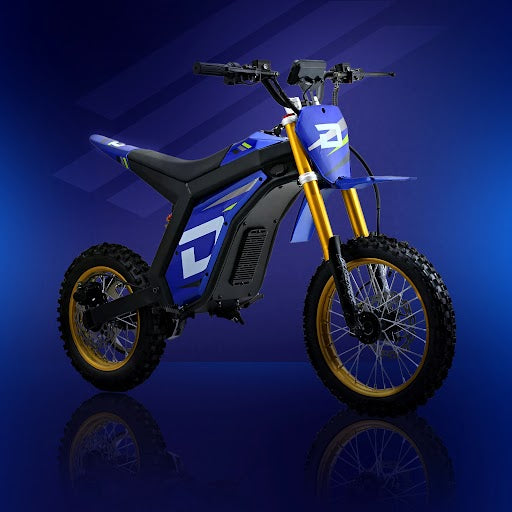Free Shipping on All Orders!

How To Choose Helmets For Kids' E-Bikes
Posted on
Electric rideables are exciting, but safety must come first. Helmets for e-bikes are more than just accessories. They absorb impact and reduce injury risk in ways standard bike helmets may not.
E-bikes have motors and heavier frames, which makes helmet selection more specific and essential, especially for children. Choosing the right helmet starts with understanding how e-bikes and helmets work together.
What Makes E-Bike Helmets Different
Helmets for e-bikes are designed for higher-impact situations than standard bicycle helmets. Traditional bike helmets are tested for falls at lower speeds, whereas e-bike helmets undergo testing that accounts for the increased velocity and weight of electric rides.
Some helmets provide extended rear coverage to protect the back of the head in backward falls, a common risk during sudden stops. Many models also use stronger outer shells and denser interior foam to disperse impact force across a larger area, reducing the risk of serious head injury.
Additional design features, such as reinforced side panels and improved strap systems, help maintain stability during sharp turns or unexpected bumps. These features are especially valuable for children using compact models like the Weeler. Its small frame paired with powered performance lets young riders experience speed while staying protected.
Start With Helmet Certification
All helmets sold in the United States must meet the Consumer Product Safety Commission (CPSC) standard. However, for e-bike riders, there are more relevant certifications.
Look for a helmet that meets one of the following:
● NTA-8776: This is a Dutch standard made for helmets used on speed pedelecs and other faster e-bikes. These helmets offer better coverage and shock absorption.
● ASTM F1492: Often used for skateboarding and BMX riding. Some e-bike helmets include this as a secondary standard. It helps when a rider may be jumping or riding on mixed surfaces.
● EN 1078: A European standard, used in multi-sport helmets. While it is more common outside the United States, it still gives a layer of trust.
A certified helmet proves that it has been tested beyond basic levels. While a label does not tell the whole story, it is a strong place to start.
Get the Right Fit — Not Just the Right Size
A common mistake when buying helmets for e-bikes is selecting one based solely on age rather than actual head measurements. Children’s head sizes differ significantly, even among kids of the same age.
A helmet that is too loose can shift during impact, reducing protection. Meanwhile, one that is too tight may feel uncomfortable, cause pressure points, or lead the child to refuse wearing it altogether.
Use a flexible measuring tape to wrap around the widest part of the head, just above the eyebrows and ears, to get an accurate measurement. Most kids’ helmets are labeled XS, S, or M, but it is essential to always check the centimeter range provided.
Trying the helmet on after measuring helps confirm the fit, as adjustments through straps, padding, and dial systems can fine-tune comfort and security. This approach maximizes protection while making it more likely your child will wear the helmet consistently.
Also, look for features that help adjust the fit:
● Dial adjusters: A wheel at the back that tightens or loosens the helmet shell
● Adjustable straps: Let you change the chin and side tension
● Padding sets: Add or remove foam pads inside the helmet for a snug feel
Comfort increases the chance your child will wear the helmet without complaints. A helmet must feel secure but should not press hard or move around when the child shakes their head.
Ventilation Is Not Just for Comfort
Riding an e-bike may not feel as intense as traditional cycling, yet heat can build up quickly, especially on warm days or during longer rides. Helmets with enhanced airflow keep children cooler, more comfortable, and able to focus on the ride.
Ventilation in e-bike helmets helps in two major ways:
● It stops sweat from collecting around the forehead and eyes
● It prevents overheating, which can affect balance and concentration
Look for helmets with multiple air channels and wide vents. Some models even include insect mesh, a helpful feature when riding near parks, trails, or wooded areas.
Visibility Features to Watch For
A helmet does more than absorb impact; it can prevent accidents by increasing visibility. High-visibility helmets are becoming popular in the e-bike community because they make young riders easier to spot by drivers, cyclists, and pedestrians alike.
Helmets designed for e-bike riders often come with:
● Reflective strips: Visible from many angles in low light
● Bright colors: Help spot riders during daylight hours
● Rear LED lights: Rechargeable and positioned for traffic-level visibility
Many Droyd riders using the Blipper, our teen-friendly electric bike, take evening rides or join family outings. Helmets with built-in lighting help protect riders as dusk falls or when riding near roads.
Why MIPS Might Matter
MIPS, or Multi-directional Impact Protection System, is an added technology in some helmets that reduces rotational forces transmitted to the brain during angled impacts. When a rider falls at a slant, the helmet moves slightly around the head, absorbing force before it reaches the brain.
While not every helmet includes MIPS, it is a valuable feature for kids using faster e-bikes or riding on mixed terrain. Young riders transitioning from tricycles to electric models like the Romper or Weeler gain extra protection and confidence from this technology.
How to Check for Helmet Damage
Even the highest-quality helmets lose effectiveness after impacts or prolonged use. Small cracks, compressed foam, or damaged buckles may not be obvious but can compromise safety.
After any impact, inspect:
● The shell for visible dents or cracks
● The foam liner for squishing or separation from the shell
● The straps and buckle for wear, tear, or fraying
Helmet manufacturers recommend replacement every three to five years, even without a crash, as sun exposure, sweat, and aging weaken materials over time. Regularly checking helmets alongside e-bike batteries and brakes keeps safety a routine part of every ride.
Understanding Helmet Types for Each Age
Young riders have different head shapes and riding needs compared to teens. Helmets must reflect those differences.
· Toddlers and early riders benefit from round helmets with extra back coverage, as they are more prone to backward falls.
· Elementary-age riders do best with lightweight helmets featuring adjustable fit systems and effective ventilation.
· Teens riding faster e-bikes, like the Blipper, need advanced helmets with MIPS or extended safety certification.
Speed, terrain, and riding habits matter as much as age when selecting a helmet.
Helmets That Match E-Bike Speed and Use
Some helmets are better for certain riding speeds or activities. For example, street riders may need different helmet features than off-road trail explorers.
If your child uses their e-bike for neighborhood cruising or to get to school, focus on lightweight helmets with reflectors and good ventilation. But if they ride on bumpy trails or in group rides, consider a more rugged helmet with extra coverage and chin strap stability.
At Droyd, our electric rideables, like the compact weeler and the fast-but-safe Blipper, are designed with these use cases in mind. Each model fits a different riding purpose, so helmet pairing matters.
Why We Care at Droyd
We build safe electric rideables for kids and teens, and that care extends beyond the product. We understand how much helmet choice matters because we are parents too. That is why our support team guides riders to helmets that match the speed, size, and function of our vehicles.
Our rideables, from the weeler to the Blipper, are designed with safety in mind, and the right helmet makes every ride even better.




